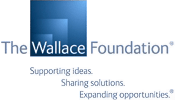What We Should Expect of Public Education: Access and Equity Meet The Thorn of Quality
Returning to the first question Laura posed a few days ago, I will explore the territory that has, with a few exceptions, been pretty much sidestepped. Whether one agrees or not with her report's definitions or arguments about the implied relationships between the arts, the schools and American Culture, and whether or not we are talking about policy, practice or preferences, the gorilla in the room is "the public schools."
Bascially, Laura argues that there is a relationship between teaching the arts (in Rand's case, the "high" arts) and the quality of our culture, and therefore, the American public schools have a role and responsibility for making the arts "accessible" (offered in scope and sequence, Kindergarten through High School), equitably distributed (to all children in every grade in every school in the country). What she does not address is the pervasive issue of highly variable quality.It is my position that access, equity and quality are what we should expect of public education when it comes to the arts (and any other subject).
I hope you will accept, for a moment, that my background, training and experience as an artist (dance, theater, music, poetry, expository writing, etc), educator and researcher qualify me as one of Elliot Eisner's "connoisseurs." Borrowing that mantle for a minute, I will state my reasons for the trinity of access, equity and quality:
- As critical and elusive as it is to find the ideal access and equity in most school systems, quality is even more of a challenge. What good is it to claim that all schools and all children have full and inimpeded access to the arts throughout their elementary and secondary education if the teaching of those disciplines ranges anywhere from inadequate to sterling?
- Without both pre-service and inservice professional development for teachers, their supervisors, and yes, administrators, there is little chance of sustained quality instruction by eager and willing teachers in the classrooms. Frameworks, blueprints and other resource materials help enormously, but more is needed to encourage and support teachers who try to authentically incorporate the arts into their classrooms without benefit of expert coaching and guidance.
- As much as I champion the promise of carefully built cultural and community arts partnerships and the potentially illuminating roles of artists as trained and professionally developed resources to the schools in their locales, there will never be enough money to provide each and every school with these "credentialled" artists at every grade level, K-12. And artists, much like arts educators, can run the gamut of quality.
- Until and unless the school, arts and research communities sit down together to discuss, design, field test and carry out a multi-dimensional framework for assessing arts learning, instruction and curriculum design, respect for and acceptance of arts education will remain elusive. We must design a fair and equitable system to assess the effectiveness of services and programs that claim to result in arts skills, knowledge, understanding, performance, and authentic connections to students' lives and their communities.
- Our goal should be to demonstrate convincingly how access, equity and quality in our public schools can produce enviable cognitive, social, emotional and physical growth in all our public school youngsters.
I see this not as a national or federal task (education is still a state responsibility) but as a state and local challenge, and certainly an individual school community necessity. From the bullet points above, and others that should be added, it could be relatively easy to design a research and development study that would operationalize the multiple implications embedded in the "design.".
This is the kind of work that fares best when it brings together public and private (foundation and other) resources, operates both from the grass to the top roots and down again, and brings together all the central and "outlier" players. As an old hand at program design, research and evaluation, I am just itching for the chance for a group of people like us to to take a stab at it.
Any takers?
About
Our Bloggers
Sam Hope, executive director, The National Office for Arts Accreditation (NOAA);
Jack Lew, Global University Relations Manager for Art Talent at EA;
Laura Zakaras, RAND;
James Cuno, Director, Art Institute of Chicago;
Richard Kessler, Executive Director, Center for Arts Education;
Eric Booth, Actor;
Midori, Violinist;
Bau Graves, Executive director, Old Town School of Folk Music;
Kiff Gallagher, Founder & CEO of the Music National Service Initiative and MusicianCorps
Bennett Reimer, Founder of the Center for the Study of Education and the Musical Experience, author of A Philosophy of Music Education;
Edward Pauly, the director of research and evaluation at The Wallace Foundation;
Moy Eng, Program Director of the Performing Arts Program at The William and Flora Hewlett Foundation;
John Rockwell, critic;
Susan Sclafani, Managing Director, Chartwell Education Group;
Jane Remer, Author, Educator, Researcher
Michael Hinojosa, General Superintendent, Dallas Independent School District
Peter Sellars, director
Contact us Click here to send us an email... more
Peter Sellars on Creativity & the Voice more

11 Comments
Leave a comment